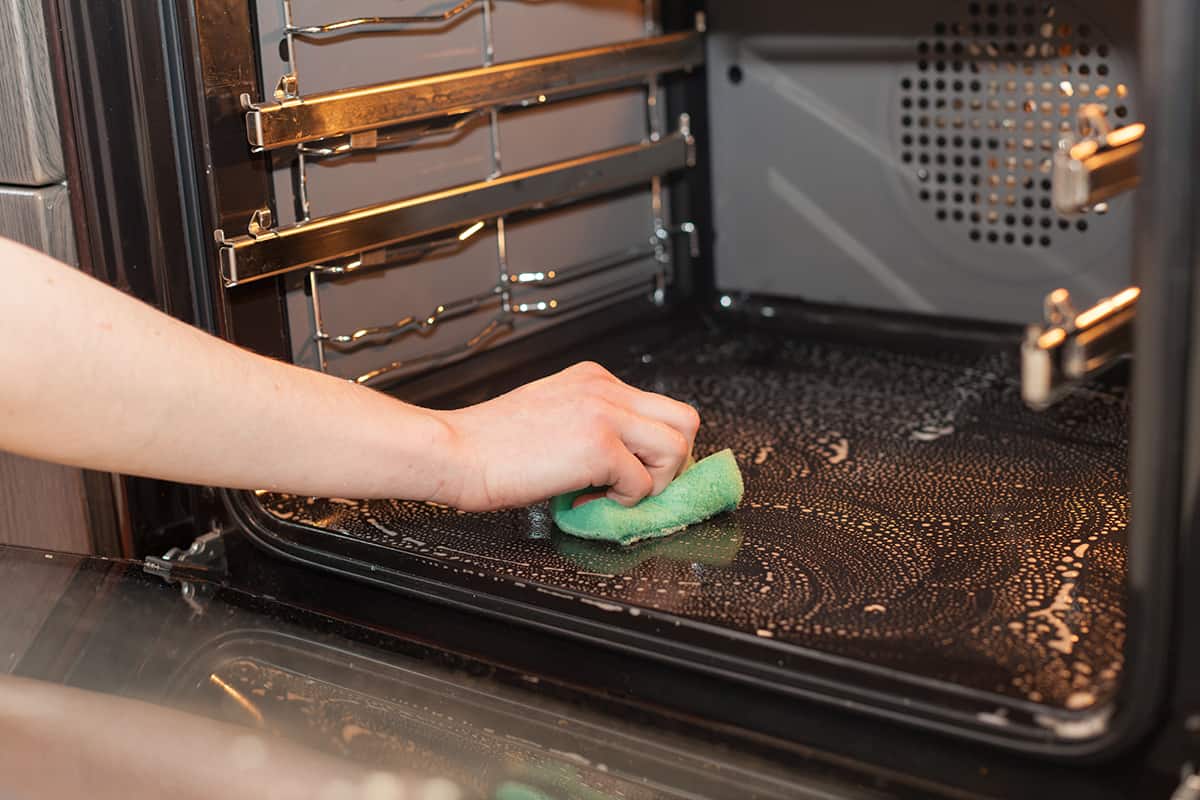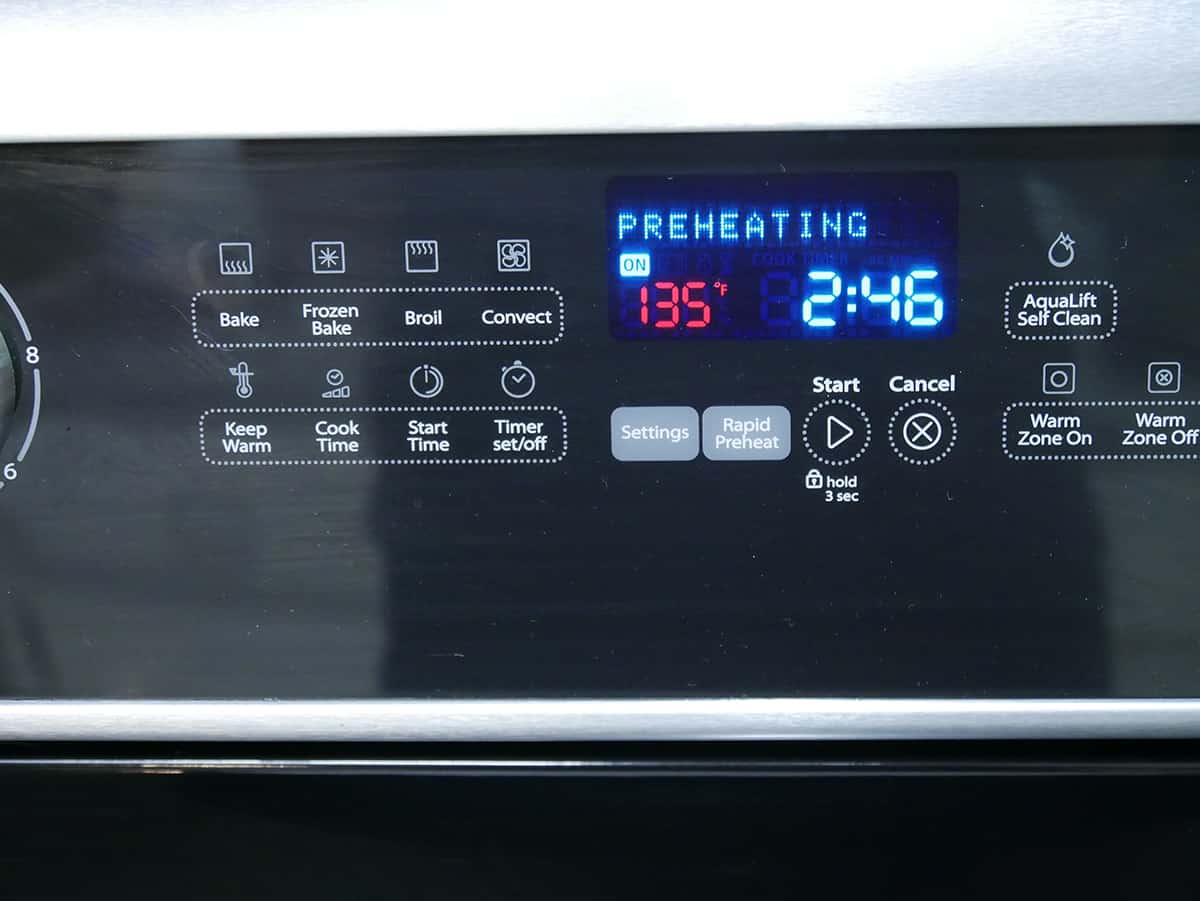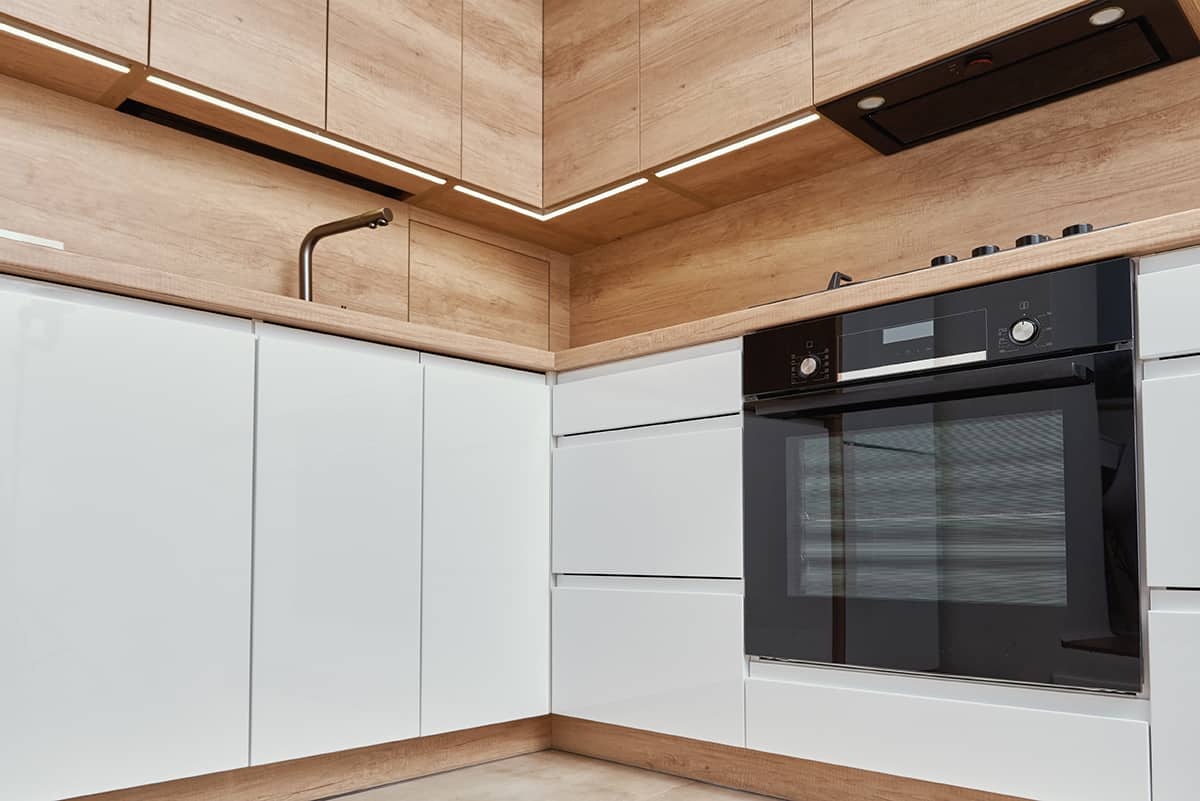There’s nothing like breaking in a new kitchen appliance, especially an oven. With your brand-new oven, you can come up with all sorts of delicious recipes to serve to your guests for dinner. But before you even think about making a roast in the oven, there are a few things you should do beforehand.
The first thing you should do when you unbox a new oven is deep-clean the inside. You can do this by:
- Removing all of the oven’s accessories from their plastic packaging.
- Wiping down the oven’s inside and accessories with a damp cloth.
- Turning on the oven, set it to its highest temperature, and let it run for 2 hours.
- Letting the oven come back down to room temperature.
- Wiping down the oven’s inside with a dry cloth.
In this guide, I’ll explain in more detail the proper steps for breaking in a new oven, as well as address some of the most frequently asked questions about new ovens.
What to Do Before Using a New Oven for the First Time
As exciting as a new oven range is, it’s important that you deep clean the inside before using it for baking food. New ovens are filled with all sorts of chemicals and manufacturing residue that will contaminate your food if you don’t remove it beforehand.
Here, I’ll explain how to remove the chemicals from your oven and how to break it in for the first time.
1. Remove the oven’s accessories from their plastic packaging and clean them
Open the oven door and slide out the racks, as well as all of the oven’s accessories. Remove them from their package and place them in a basin of soapy water. Use a sponge to vigorously scrub the racks and accessories to remove the manufacturing residue. After that, place them on a dishrack or a flat surface to air-dry.
2. Wipe down the oven’s interior and accessories with a moist cloth
Moisten a clean microfiber cloth in water and use it to wipe down the inside of the oven. Make sure you wipe down the corners and the oven’s ceiling, too. If the cloth becomes too dirty with oils and whatnot, rinse it off before soaking it in water and continuing to wipe down the oven’s interior.
The goal is to remove as much of the chemical residue as possible. Sometimes, it can take 2 to 3 rinses before all of the manufacturing oils are completely gone.
3. Set to oven to its highest temperature and let it run for 2 hours
It can be close to impossible to remove every trace amount of chemicals inside the oven, which is why you should burn the rest off. You can do this by setting your oven to its highest temperature (around 500°F) and leaving it alone for 2 hours. After that, shut the oven off.
If you notice smoke or foul odors emanating from the oven, there are probably spots in your oven that are filled with manufacturing residue. If this is the case, shut the oven off and repeat the previous step before turning your oven back on.
Now would be a good time to activate your range’s ventilation hood if it has one. The burning chemicals can produce a slightly foul odor that can take several hours to dissipate. However, with a ventilation hood, you can get rid of the smell before it has time to spread and linger.
4. Let the oven come back down to room temperature before wiping it down with a dry cloth
After burning the chemicals, it’s time to give your oven a final wipe down. Use a new, clean microfiber cloth to scrub the inside of your oven, making sure to get the oven door, too. It’s completely normal if you see chemical splotches on your cloth after wiping down the oven for the second time.
However, if there is an abundance of manufacturing chemicals on the cloth, there’s a good chance that the heat failed to burn up the remaining chemicals. In this case, repeat steps 2 and 3.
Can You Use an Oven Cleaner on a New Oven?

Oven cleaners are great for dissolving grease and solid food remnants on an oven’s walls, floors, and racks. However, if you just purchased a new oven, you shouldn’t use an oven cleaner while breaking it in.
An oven cleaner is filled with all sorts of chemicals that we don’t want to introduce to the oven right away. Some soapy water is all it takes to get rid of chemical stains. If you want to get rid of the new-oven smell, a bit of baking soda should do the trick!
Why Is the Oven Smoking?
If you see smoke inside your oven, there’s a good chance that you didn’t remove all of the manufacturing residue and lubricants before turning it on. Thankfully, this doesn’t mean that your brand-new oven is broken.
What you should do is turn the oven off, let it come back down to room temperature, and then use a damp cloth to wipe down the inside of the oven, making sure to remove as much of the chemicals and lubricants as possible. Now, turn the oven back on and continue with the breaking-in process.
Why Does Preheating the Oven Take Too Long?

Newer oven models typically have larger interiors than ovens from 10 to 15 years ago. As such, it will take the oven’s heating coils to raise the heat inside the oven and keep it at a consistent temperature. It’s simple physics—the more air an oven needs to heat up, the more time it will take.
In addition, the heating coils in some oven models are hidden underneath the oven’s floor. Since there is a physical barrier between the open-air space inside the oven and the heating coils, it will take the oven considerably longer to reach the set temperature.
One neat way to get your oven to preheat more quickly is to turn the broiler on for 5 minutes. The broiler introduces direct heat into the oven, which will raise its internal temperature significantly over a period of 5 minutes. After that, shut the broiler off and reactivate the baking function.
Should You Use the Self-Clean Feature in a New Oven?
Congratulations to you if you purchased a self-cleaning oven. These things are real-life and time savers since they get rid of caked-on debris with the power of extremely high heat. But when you first receive your self-cleaning oven, should you run the self-clean feature right away?
No, you shouldn’t. The self-clean feature should be used only to get rid of set-in debris on the floor, walls, and roof of your oven. The oven does so by heating up to around 1,000°F, causing all solid food waste to disintegrate into a fine ash. On average, you’ll only need to run the self-clean cycle once every 4 to 6 months.
Now, when you first get your self-cleaning oven, you should perform a manual deep clean before anything else. Activating the self-clean feature may cause the manufacturing residue to catch fire or permanently cling to the walls of your oven, which can contaminate your food in the future.
Can I Broil in a Brand-New Oven?
You should not use a brand-new oven for cooking food in any way until you’ve had time to deep-clean the inside. This is especially true before attempting to broil anything since the broiling element can reach a higher temperature than the baking element, which can cause the leftover manufacturing residue to catch fire.






